For These Tiny Spiders, It's Sing or Get Served
For the better part of the summer, Erin Brandt, a graduate student in environmental science at UC Berkeley, has been holding speed-dating sessions in the lab — for spiders.
Two by two, Brandt studies the mating habits of jumping spiders, a family of furry, often colorful arachnids that could fit on the tip of your pinky. Their elaborate courtship displays, which researchers say could help answer questions about the evolution of mating practices in general, have long interested scientists and even earned the spiders a fan base online.
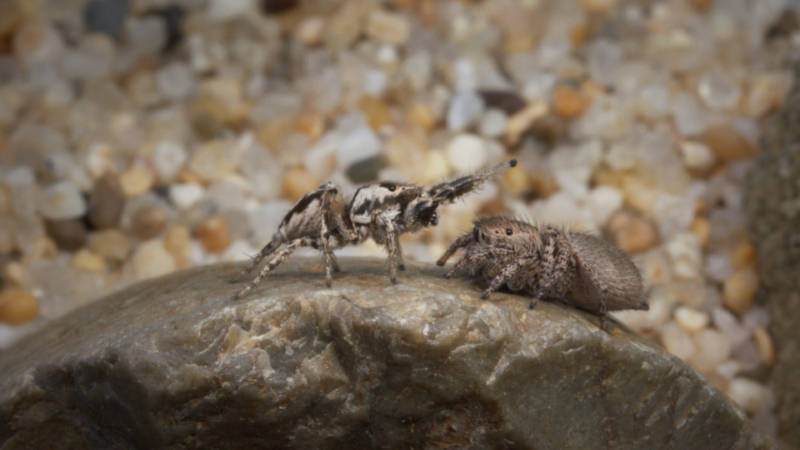
“I’m kind of known as the spider lady in my family now,” Brandt said. “I’m interested in how behaviors evolve, and jumping spiders are a great way to look at that. And they’re just so cute.”
During the courtship, the male jumping spider performs an exuberant dance to get the female’s attention. Like a pint-sized Magic Mike working for twenties, he shimmies from side to side, waves his legs, and flaps his front appendages (called pedipalps) in her direction.
If she likes what she sees, the female may allow him to mate. But things can also go terribly wrong for these eight-legged suitors. She might decide to attack him, or even eat him for lunch.
“There’s no way to tell what she’s going to do,” said Brandt.
Cannibalism is the result about seven percent of the time.
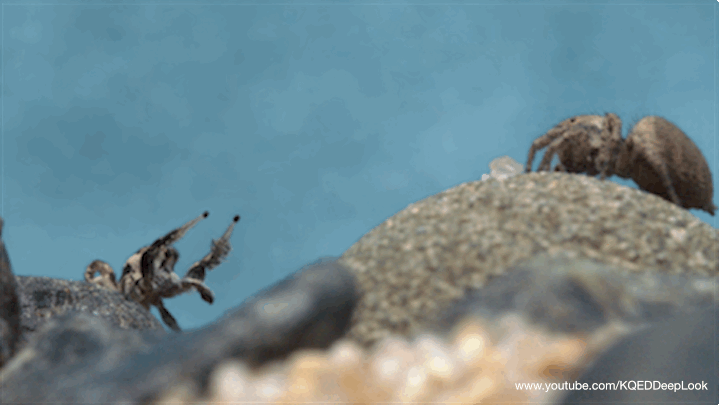
These mating rituals were first described more than 100 years ago. Their study took on a new dimension, however, when scientists discovered that the males also sing when they attempt to woo their lady loves.
By rubbing together their two body segments, the males create vibrations that travel through the ground. The female spiders can “hear” the male songs through ear-like slits in their legs, called sensilla.
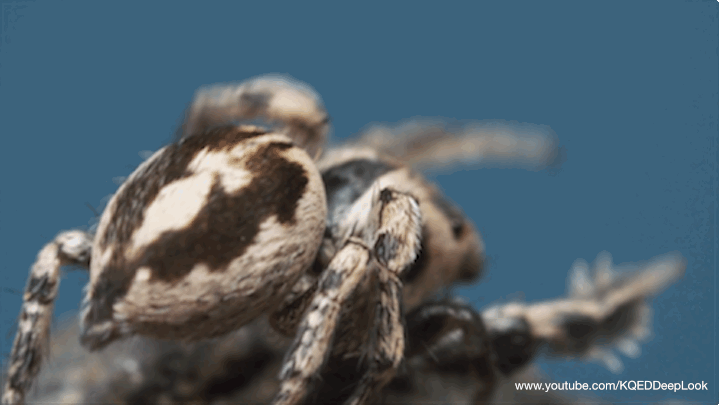
Damian Elias, a professor who works with Brandt, first listened to these songs using a modified phonograph needle that registered the vibrations. Today, using a more sophisticated vibrometer that tracks minute movements with a laser, researchers in his lab can turn these inaudible songs into something people can hear.
Far from being random noise, each spider song is composed of a specific series of thumps, scrapes and buzzes, called motifs, all synched to the spider’s movement.
Each spider makes the song his own. Though the motif sequence is the same within a species, individuals can add personal touches, such as an extra thump, or a longer, louder buzz.
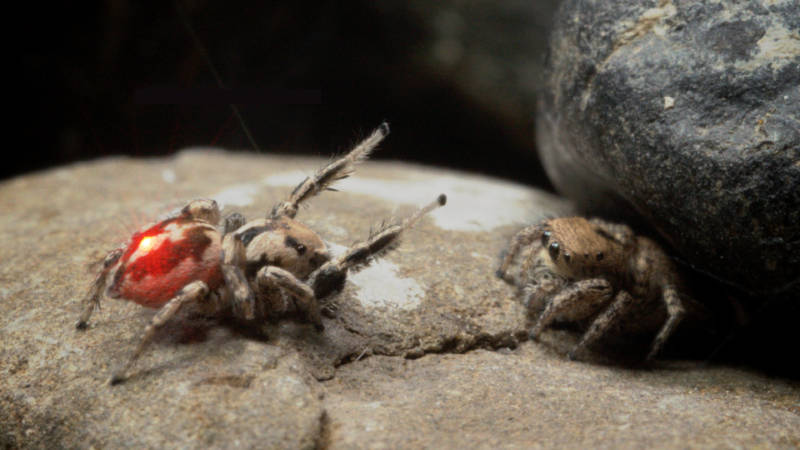
A male spider’s coordination of the dance and the song seems to affect his reproductive success — in other words, his ability to stay alive during this risky courtship trial. But what exactly the signals mean remains mysterious to scientists.
“The only thing that’s known unambiguously is that vibration is important,” said Brandt.
In a 2005 experiment, Elias proved that importance by sticking the two parts of the male spiders’ bodies together with wax, effectively preventing them from singing.
For these “muted” spiders, who could still dance, the success rate plummeted by two-thirds. Cannibalism by the females more than quadrupled.
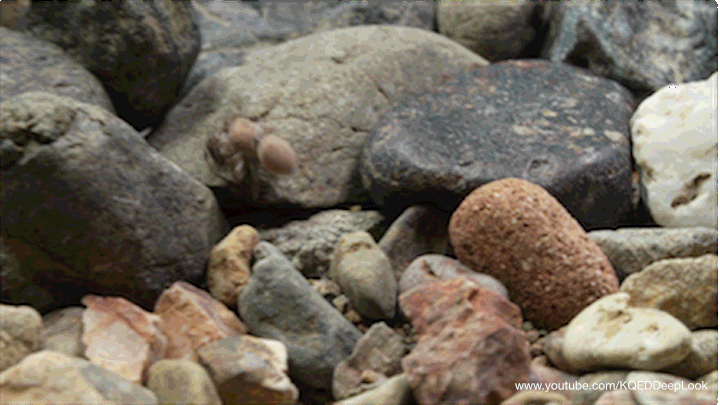
Studies like these may one day shed light on courtship rituals throughout the animal world. That’s because jumping spider courtship is a classic example of what Charles Darwin called sexual selection, a footnote to evolution that attempts to explain an apparent contradiction.
More than 150 years ago, Darwin was troubled by the way some animals go to so much trouble to find mates. How, he wondered, could it be advantageous to the species in general?
The answer, according the sexual selection theory, is that the idea of “survival of the fittest” works not just between species competing for resources, but within the species as well. Courtships weed out individuals who would produce weak offspring.
One sex has the burden of proof, the other has choice.
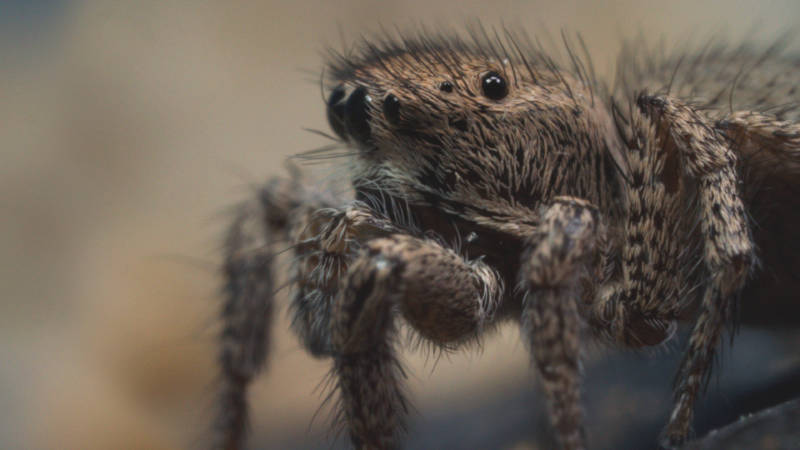
The common assumption is that successful courtship behavior demonstrates health and vigor to a potential mate. But when it comes to jumping spiders, that assumption doesn’t tell the whole story. Sometimes, as Brandt has repeatedly observed, smaller males, or even those with a visible defect such as a missing limb, do just as well as healthy individuals.
“What do females care about?” Brandt said. “We really don’t know.”
Scientific focus has shifted from describing male behaviors during these jumping spider courtships to figuring out what they mean, through the eyes and ears of the female.
While Elias’s lab in Berkeley concentrates on the songs, another group of researchers is looking more deeply into the spiders’ dance routines. Elizabeth Jakob, a professor at the University of Massachusetts, Amherst, has developed an eye-movement tracker — like the ones used on people for psychology experiments — small enough to follow the gaze of female spiders. Two biologists at the University of Pittsburgh, Nathan Morehouse and and Daniel Zurek, are using Jakob’s tracker to follow the females’ visual interest while they watch videos of males performing.
“Gaze is where vision meets cognition,” said Morehouse. “It tells you something about the priorities of the animal, in terms of what’s most interesting to them.”
Environmental factors could even play a role. Brandt’s research is looking into what effects temperature, and by extension global warming, might have on female choice.
With all these experiments, the scientists ultimately hope to understand how a female decides whether she’s looking at a stud — or a dud.
“You can endlessly look at the male,” Brandt said, “but the females have all the power. They’re driving the evolution of the system.”
